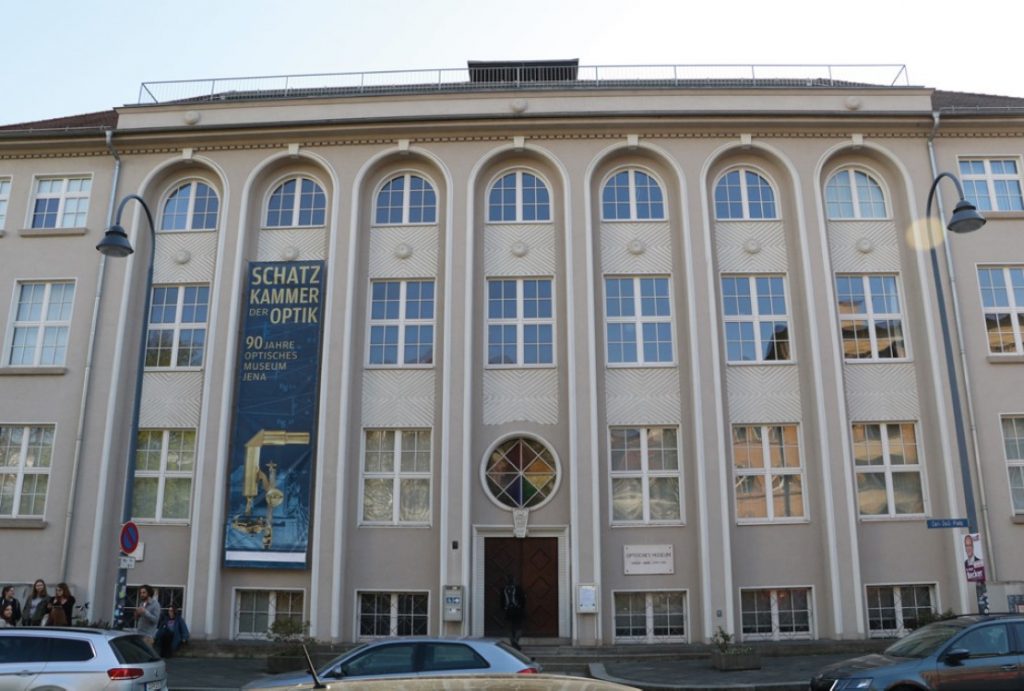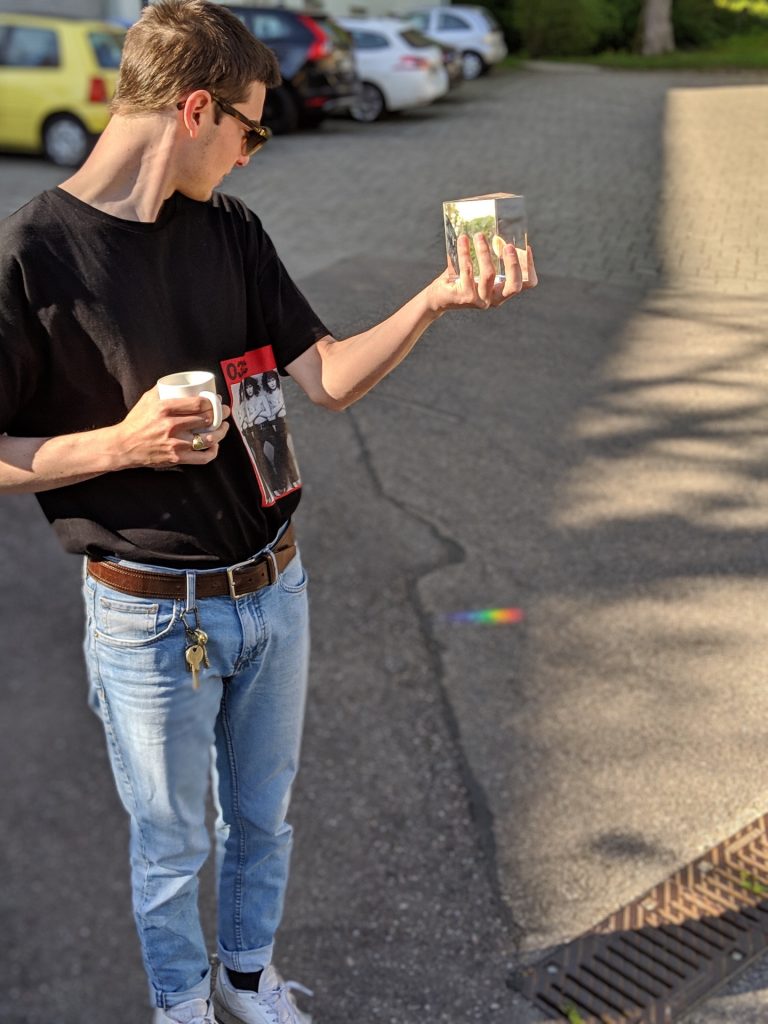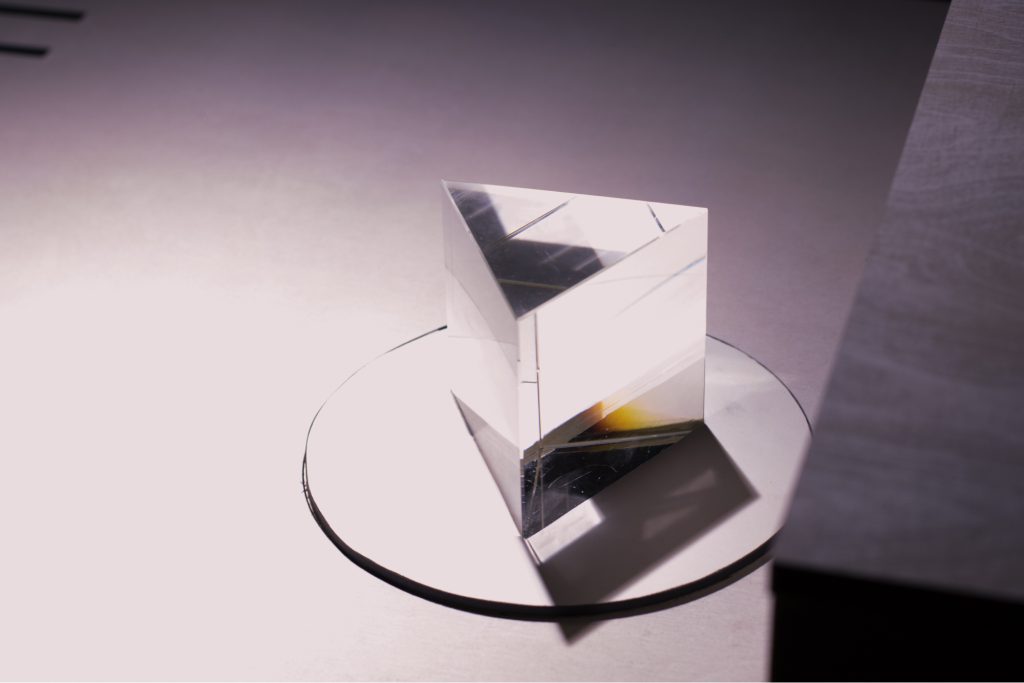Challenge
In collaboration with my university, my team and I were tasked with the challenge of creating an engaging exhibition for the Deutsches Optisches Museum (German Optic Museum) in Jena, Germany. To achieve this, we spent two days researching the various topics and themes the museum wished to showcase. During our exploration, we discovered a section that aimed to elucidate the intricacies of the electromagnetic spectrum.

No interaction, no fun!
The construction and information design really lacked of a great user experience. To be honest there was no interaction at all, the information texts were boring and too long… it felt really dusty.
How can we change the boring user experience into an exciting and immersive experience?
Research
We took a deep dive into the electromagnetic spectrum.
The electromagnetic waves are overwhelming. It is incredible how our surrounding is affected by it and in which different use cases the humans take advantage of it. It can roughly separated into visible and invisible waves. The invisible ranges are from radio waves to gamma rays. In between there is a small area our human eye is capable to see, which is known as the colored light spectrum.


Newton’s experiments with prisms and light.
In 1666 Isaac Newton discovered that white light is composed of seven base colors.
We noticed that these kind of experiments have a great potential to introduce non scientist to the theory of electromagnetic waves. So we started to recreate and explore, experiments within this topic.
Exploration
Playful interaction instead of passive consume.
We wanted the visitors to get active and have fun, while being focused on one topic at the time. So we tested a bunch of different experiments and thought about how we can integrate them into an exhibition flow.





Concept
Zoom in and gather information, while interacting.
The visitor can start interacting with the white light and a prism. A dynamic projection communicates important informations about the active topic. The refracted light through the prism can be filtered through different color filters. Enough playing with the filters will turn on the invisible part of the electromagnetic spectrum. But how? Watch the video to get an own impression.
Realisation
The most fun part of the project was the prototyping and the construction. For the final exhibition we needed several parts to work flawless together. Let me walk you through the different parts.

Dynamic projection
The projection surface has two main functions, it navigates the user through the construction and explains the scientific or historic background at each step. The projector mounted at the ceiling is connected with a laptop where a keynote is open. Depending on which step the visitor is in the construction the laptop opens the matching slide … of course with the help of our Arduino.

Color filters
The use of color filters manipulates the visible light and supports the understanding that each color has a certain wavelength. The visitors learn what impact each one and the combination of them has on the light. To show the right information on the projection surface, we notice which filter is in usage through our self build contact system that is connected with the Arduino setup.

The light
To recreate Newton’s experiment we needed a light that’s similar to the daylight. For this, we hacked an old Kodak slide projector and used the halogen low-voltage lamp as a light source. Because it emits a broad color spectrum when it’s refracted.

The invisible spectrum
When the visitor has all color filters in the slots, it turns off the projector and the light source. But at the same time, it triggers a UV-light tube which is located behind the projection surface. Through this, the visitor can see a visual map of the electromagnetic spectrum on a table that wasn’t noticed at the beginning.
The visitor can now read more about the different electromagnetic waves. We made the invisible visible.
To create this we needed stencils for the waves and the information texts. Then we sprayed it on the table with a color that’s only visible in UV light.

Arduino
For our construction, it was important to keep track of the visitor’s position. So we build different custom triggers for each interactive element. An Arduino Leonardo was programmed to check each element at the same time and then trigger the matching slide on the projector.

The prism
The glassy prism refracts the light when it’s incoming from the right angle. The visitors can adjust this angle by playing with the turntable on which it’s standing. A magnet underneath the turntable helps to find the right position. When it’s in place the projection surface changes the information showing, through the help of our Arduino setup.
Final impressions


